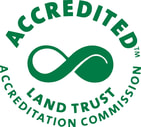Huyck Explorer Challenge
How it Works
There are seven stamps placed in the trailhead kiosks around the Huyck Preserve, one stamp for each kiosk. (And an eighth hidden bonus stamp!) Collect prints from at least five stamps and submit a picture at www.huyckpreserve.org/HuyckExplorer to get a prize.
To do this activity, you will need:
There are seven stamps placed in the trailhead kiosks around the Huyck Preserve, one stamp for each kiosk. (And an eighth hidden bonus stamp!) Collect prints from at least five stamps and submit a picture at www.huyckpreserve.org/HuyckExplorer to get a prize.
To do this activity, you will need:
- an ink pad or marker to ink the stamps
- a piece of paper, notebook, or a Huyck explorer guide to make your stamp marks
List of Huyck Preserve Kiosks
1) Lower Falls Kiosk
2) Post Office Trail Kiosk
3) Lake Myosotis Beach Kiosk
4) Lake Myosotis Boat Launch Kiosk
5) Eldridge Research Center Kiosk
6) Race Track Kiosk
7) Wood Road Kiosk
1) Lower Falls Kiosk
2) Post Office Trail Kiosk
3) Lake Myosotis Beach Kiosk
4) Lake Myosotis Boat Launch Kiosk
5) Eldridge Research Center Kiosk
6) Race Track Kiosk
7) Wood Road Kiosk
While you are exploring, make sure to stay on the trails, be respectful of all plants, animals, and other wildlife, and follow all Huyck Preserve rules.
Good luck explorer and most of all, have fun!
Good luck explorer and most of all, have fun!
Clue to the Hidden Stamp
Begin your journey at the Eldridge Research Center. Walk down the road past the spillway to the east entry of Lincoln Pond Trail.
Follow Lincoln Pond Trail until you reach a place where a human-made wooden structure crosses over water. Look for a box attached to the railing.
Follow Lincoln Pond Trail until you reach a place where a human-made wooden structure crosses over water. Look for a box attached to the railing.
This activity is inspired by the hobby of letterboxing.
What is Letterboxing? (Click to expand)
Much like geocaching, letterboxing is an outdoor hobby that combines elements of treasure hunting, hiking, art, and orienteering. Letterboxers look for small boxes that have been hidden in public spaces. Instead of following coordinates and using GPS as in geocaching, letterboxers use a more old-school method of following clues and written directions to find a location. Once a box is found, inside the letterbox will be a stamp, often hand-carved, for the letterboxer to make an imprint in their journal, and a log book, for the letterboxer to leave their own mark.
The hobby of letterboxing originated in Dartmouth, England, in year 1854. The trail guide James Perrott hid a bottle at Cranmere Pool for visitors to leave calling cards. From there, people picked up the habit of hiding boxes on trails for people to leave post cards and letters, hence the name “letterboxing.” Today, the hobby has evolved into a world-wide treasure hunt. Clues to find letterboxes are posted online in letterboxing forums or passed by word of mouth. Letterboxing is a great way to mark what places you’ve visited through the stamps that you collect. It is also a great activity for kids to add a fun bit of a challenge to a family hike.
The hobby of letterboxing originated in Dartmouth, England, in year 1854. The trail guide James Perrott hid a bottle at Cranmere Pool for visitors to leave calling cards. From there, people picked up the habit of hiding boxes on trails for people to leave post cards and letters, hence the name “letterboxing.” Today, the hobby has evolved into a world-wide treasure hunt. Clues to find letterboxes are posted online in letterboxing forums or passed by word of mouth. Letterboxing is a great way to mark what places you’ve visited through the stamps that you collect. It is also a great activity for kids to add a fun bit of a challenge to a family hike.
Finished the challenge?
<<Back to Activities page



